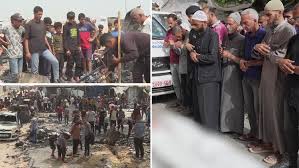Rio Grande do Sul authorities confirm 54 cases of the waterborne disease leptospirosis after the region, in southern Brazil, had record floods in April and May.
“You got into the mud, walked through flood water and had symptoms of leptospirosis? Seek health care, as there is treatment and we have enough medication. Treatment cannot wait, don’t stay at home thinking it will go away, as this could turn into a serious illness.” This message of alert and guidance to the people of the southernmost Brazilian state of Rio Grande do Sul is from the State Secretary of Health, Arita Bergmann, recorded on video for the social networks of the state government.
Rio Grande do Sul authorities have confirmed 124 cases of the waterborne leptospirosis disease after the region, just north of the Brazil-Uruguay border, experienced unprecedented floods in April and May.
Four people have died after catching the bacterial disease leptospirosis, which is transmitted through freshwater polluted with the urine of infected animals. When infected animals pee, the bacteria get into the water or soil, where they can live for months.
People can be infected by touching fresh water, soil, or other objects contaminated with infected animal urine. The most common ways to get infected is urine or contaminated water getting in the eyes, nose, mouth, or a cut or scratch. People can also get infected by eating contaminated food or drinking contaminated water.
As many as 714 suspected cases are now being investigated, the state’s health department announced.
The state health department for Rio Grande do Sul, SES, has created an epidemiological report with reported, confirmed, discarded and under investigation cases of leptospirosis. The bulletin is published daily at saude.rs.gov.br/leptospirose. In the most recent update, dated May 26, 1,380 cases were reported, of which 124 were confirmed; 542 discarded and 714 are under investigation. Rio Grande do Sul also has four confirmed deaths from leptospirosis and 10 under investigation.
The overall death toll from the devastating floods in Brazil’s southernmost state of Rio Grande do Sul is still climbing. More than 165 people were killed in the floods and many others are still missing.
More than 2.3 million Brazilians from 469 municipalities in Rio Grande do Sul have been affected by what has been described as a “climate disaster” by the Brazilian government.
At least 581,000 people are displaced, while 55,000 people from Rio Grande do Sul have been housed in temporary accommodations, local media reports.



